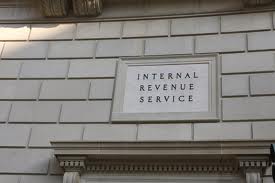"Your Local Tax Problem Solvers Since 1992"
ORLANDO: 407-915-3470
TAMPA: 813-708-5530
 A majority of American small businesses use the S corporation form of doing business. S Corporations do not pay income taxes at the corporate level.
A majority of American small businesses use the S corporation form of doing business. S Corporations do not pay income taxes at the corporate level.
The net income of an S corporation flows through to the shareholder’s individual form 1040 tax returns, is reported there and taxed at the shareholder’s individual tax rate.
This article discusses one of the main tax planning techniques an S corporation can use to save taxes.
The tax attorneys, IRS enrolled agents, and tax CPAs at The Pappas Group in Orlando have more than fifty years of combined experience in preparing S corporation tax returns and minimizing the federal income taxes of S corporation shareholders through comprehensive tax planning.
Call us today at 407.915.3470 to find out how we can help you!
An S corporation is a pass-through entity and does not pay federal income tax. The net earnings of the S corporation are passed through to the shareholders of the company and reported on their individual income tax returns. Typically, an owner of stock in an S corporation also performs services for the company making him, in addition to an investor in the company, an employee of the company.
Typically, an owner of stock in an S corporation also performs services for the company making him, in addition to an investor in the company, an employee of the company.
So what is the proper tax treatment of monies that are paid from business profits to the S corporation investor/employee?
Setting aside payments from the S corporation to the investor/employee that are loans, repayment of loans or returns of capital previously invested by him, there are two categories of payments to the investor/employee:
Here is how each category is treated for tax purposes:
 Wages paid to an investor/employee of an S corporation are treated like wages paid to any other employee. Income taxes and FICA taxes are withheld from the investor/employee’s paychecks in accordance and the investor/employee receives a net check at the end of every pay period. The S corporation must “match” and pay over to the IRS an amount equal to the FICA portion of the tax withholding.
Wages paid to an investor/employee of an S corporation are treated like wages paid to any other employee. Income taxes and FICA taxes are withheld from the investor/employee’s paychecks in accordance and the investor/employee receives a net check at the end of every pay period. The S corporation must “match” and pay over to the IRS an amount equal to the FICA portion of the tax withholding.
Under current law, the employee is required to pay (and have withheld) 7.65% of his wages toward Social Security (6.2%) and Medicare (1.45%). This means the S corporation must also pay over to the IRS, out of its own funds, 7.65% of the employee’s wages.
In 2009 the Social Security part of the FICA tax only applies to wages up to $106,800)
The combined FICA remittance, then, is 15.3% (2 x 7.65%).
The S corporation is entitled to deduct the amount of gross wages it pays to its employees, including its investor/employees, in determining the amount of net income that will be passed through and taxed on the S corporation’s shareholders’ returns.
The S corporation issues a form W-2 to the investor/employee and the investor/employee must include the wages on his federal income tax return.
 Shareholder distributions are treated differently than wages because they are deemed to be a return on the investor/employee’s investment in the S corporation and not compensation for services rendered.
Shareholder distributions are treated differently than wages because they are deemed to be a return on the investor/employee’s investment in the S corporation and not compensation for services rendered.
Distributions to a shareholder must be included in the shareholders taxable income; however, the distributions are not subject to FICA tax and are not considered self-employment income subject to self-employment tax.
No W-2 or 1099 need be issued by the S corporation to the shareholder and the S corporation has no FICA matching requirement since no FICA tax is due. Here are two examples that illustrate the differences in the tax treatment of wages and shareholder distributions:
Capone, Inc. is an S corporation. It has one shareholder who also performs services for the company. In 2009, the S corporation pays $80,000 of wages to its sole shareholder and zero shareholder distributions.
Here is the FICA calculation for the wages paid to the shareholder:
The S corporation will issue a W-2 to its shareholder in the amount of $80,000 and the shareholder must report that as income from wages on his personal income tax return.
Same facts as Example #1 except that Capone, Inc. pays $40,000 of wages to its sole shareholder and $40,000 of shareholder distributions.
The shareholder gets a W-2 for $40,000 and reports that as wages on his return. The $40,000 of shareholder distributions is reported on Schedule E (PDF) of the return and is not subject to self-employment tax.
By shifting $40,000 from wages to shareholder distributions the self-employed taxpayer saves $6,120.
The above examples show that for every dollar (up to the Social Security wage limit of $106,800) that is shifted from wages to shareholder distributions there will be a savings of 15.3%.
An investor/employee wears two hats: First, he is an investor who is entitled to expect a return on his investment. Second, he is an employee who performs services for compensation. Consequently, it makes sense that there is some apportionment between what the shareholder is paid for his services and how much he receives as a return on his investment.
 However, there is much abuse in this area of tax planning and taxpayers should consult their tax advisors before determining how to apportion payments between wages and shareholder distributions.
However, there is much abuse in this area of tax planning and taxpayers should consult their tax advisors before determining how to apportion payments between wages and shareholder distributions.
In the last decade the IRS has promised to select S corporation returns for audit based on this issue, but I have not yet seen or heard of a case where the IRS selected an S corporation return for audit based on this issue alone.
The IRS put a lien on my assets and said I owed it more than $70,000. I hired Pappas and he prepared and filed my delinquent tax returns, got the IRS debt reduced to less than $10,000 and got the lien released. The Pappas Group did what they said they would do.
Sign up now to receive tax updates and special offers.
Toll Free: 866.529.9040
Orlando: 407.915.3470
Tampa: 813.708.5530
The Pappas Group
Baldwin Park
4798 New Broad Street
Suite #210
Orlando, FL 32814
The Pappas Group
Rocky Point Center
3030 N. Rocky Point Dr.
Suite #150
Tampa, FL 33607